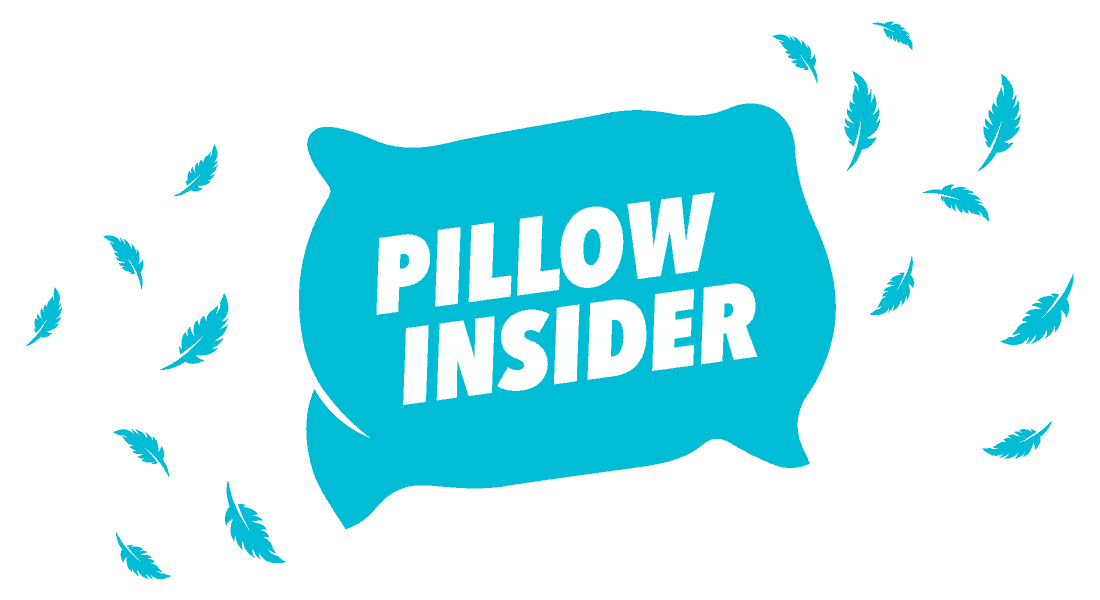What’s the best side to sleep on? And before we figure that out, does it even matter for your health?
While we all have individual preferences when it comes to the sleeping position, there are some positions that tend to be better for our overall health than the others. Your sleeping position in fact has a deep connection with your health and making crucial adjustments can save you from quite a lot of medical concerns, later in your life. So before you lie down to sleep in your favorite position today, consider the following information to determine which position shall work best for you.
Best Sleeping Positions for Your Health
While you might have never given a second thought to the position you sleep in, you shall be surprised to learn how a lot of inconvenient issues you might be facing could have been a result of an improper sleeping position. Even more surprising is the fact that these problems can be dealt with simply by switching to a healthier sleeping position.
1. Best Sleeping Position for Lower Back Pain
Sleeping on one’s back is considered the ideal sleep position for people experiencing pain in their lower back. This is because this position tends to minimize exertion of your pressure points by evenly distributing your weight across your body.
If your lower back hurts, it is recommended you sleep on your back and place a thin pillow underneath your head along with a pillow underneath the knees to allow for a neutral spinal alignment. You can also place another pillow or rolled up towel underneath the lower back to provide additional support.
However, if you are a side sleeper and tend to find it difficult to sleep on your back for a longer period, we have a better option for you. All you really need to do is get a proper side sleeping pillow to support your head and neck. Alternative, you can roll onto the side and place one pillow underneath your head and the other between your knees. If this feels uncomfortable, draw your knees towards your chest and sleep in what is commonly known as the “fetal position”. You shall find your spine regaining its alignment and the pain disappearing within a few days.
2. Best Sleeping Position for Sciatica
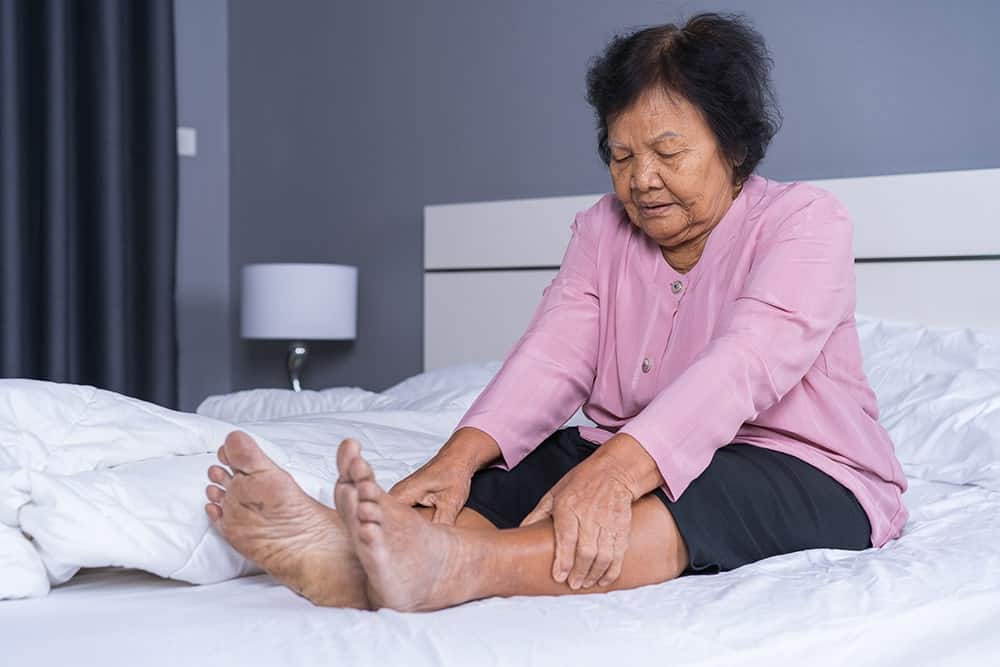
Causing a throbbing pain that radiates from the lower spine to the back of the legs, sciatica is a condition that can be controlled, in most cases, by adjusting your sleeping position. It has been found that the supine position, which involves sleeping on your back, reduces pressure on the sciatic nerves and therefore prevents it from triggering the pain.
However, one needs to make some adjustments to their sleeping-on-the-back position. In order to relieve the pressure on the sciatic nerves, you will need to elevate your knees by either placing several pillows underneath or using a knee elevation pillow for even better alignment. You should adjust the height of your knees as per your comfort level.
Furthermore, you can even place pillows underneath your arms and at your sides to support your weight additionally. A soft pillow underneath your lower back can also work wonders in alleviating the sciatic pain.
Side sleepers can also adjust their spinal alignment by sleeping on the side where the pain is not located. Placing a pillow underneath your neck, arm and between your knees that are bent at 90 degrees will help you considerably. Moreover, a pillow underneath your waist can reduce the pressure on your lower back and thus alleviates pain.
3. Best Sleeping Position for Sleep Apnea
Sleep apnea is a condition characterized by insufficient sleep and restless nights caused by episodes of momentary breathlessness. You can however get quality sleep by adjusting your sleeping position in a way to prevent the symptoms of sleep apnea from getting triggered.
If you are a back sleeper, you might need to consider switching your sleeping position preferences. Supine position tends to make breathing difficult since the increase in gravitational forces constricts your airways. Though, by sleeping on your stomach, you might experience considerably lower gravitational forces, however, the constriction of your nose and mouth makes staying ventilated even more difficult.
It is therefore primarily recommended for patients of sleep apnea to adopt the lateral sleep position, with left side being the preferred option. It is in this sideways sleeping position that your airways are dilated enough to allow smooth airflow, leaving your nose and mouth both unfazed.
So while you try and adjust to sleeping on your side, a thick and resilient pillow providing adequate support to your head and neck can help you sleep comfortably. Contoured pillows tend to provide ideal support by ensuring sufficient spinal alignment. If you have a tendency to revert to your old sleeping position during the night, cuddling a large body pillow can enable you to retain your lateral position throughout the night.
4. Best Sleeping Position for Acid Reflux

During the night, gravitational forces tend to act against your favor. Those with acid reflux often experience trouble sleeping due to the pain caused by the reflux of stomach acid into your esophagus, lungs, throat and sinuses.
By making smart use of your body’s anatomy and gravitational forces while you sleep, you can however get rid of the acid reflux. Individuals suffering from symptoms of reflux are advised to sleep on their left side. In this position, your stomach tends to be located below your esophagus. Even if the acidic contents from the stomach find a way to get into your esophagus, gravity will play its role in immediately flushing it back into the stomach where it belongs.
Pairing the left side sleeping position with an incline can further help to reduce the symptoms. Propping up your body, from the head and neck region all the way to the torso further helps gravity in returning the reflux back to the stomach and preventing it from happening again. You can use a bed wedge pillow or a couple of pillows to prop yourself up into this smart position that makes acid reflux an impossibility during the night.
5. Best Sleeping Position for Digestion
It is always advised to stop eating at least three hours before you go to sleep, to give your digestive system enough time to get rid of what you ate. However, if due to any reason you suffer from indigestion, your sleeping position can have a huge impact on the way your body will deal with the waste disposal.
Sleeping laterally on your left side has been effectively proven to aid in digestion. This is because in this position, gravity aids in moving waste through your intestine and dumps it into the colon to be excreted later on.
Sleeping on your right side on the other hand, will cause the stomach acid and food particles to spread out, making it difficult for digestive juices to work their magic and thus causing indigestion as well as heartburn.
When sleeping on your side, it is absolutely necessary to elevate your head and neck in a way that the spine retains its natural alignment without enabling pressure points to exert your muscles. You can do so by using a plush yet supportive pillow underneath your head.
Make sure your arms are parallel to each other on your sides. Alternatively, you can even use a body pillow and hug it for additional support. Moreover, a pillow wedged in between your knees can help provide much needed support to your hips and lower back, further aiding in a fitful sleep through the night.
6. Best Sleeping Position for Neck Pain
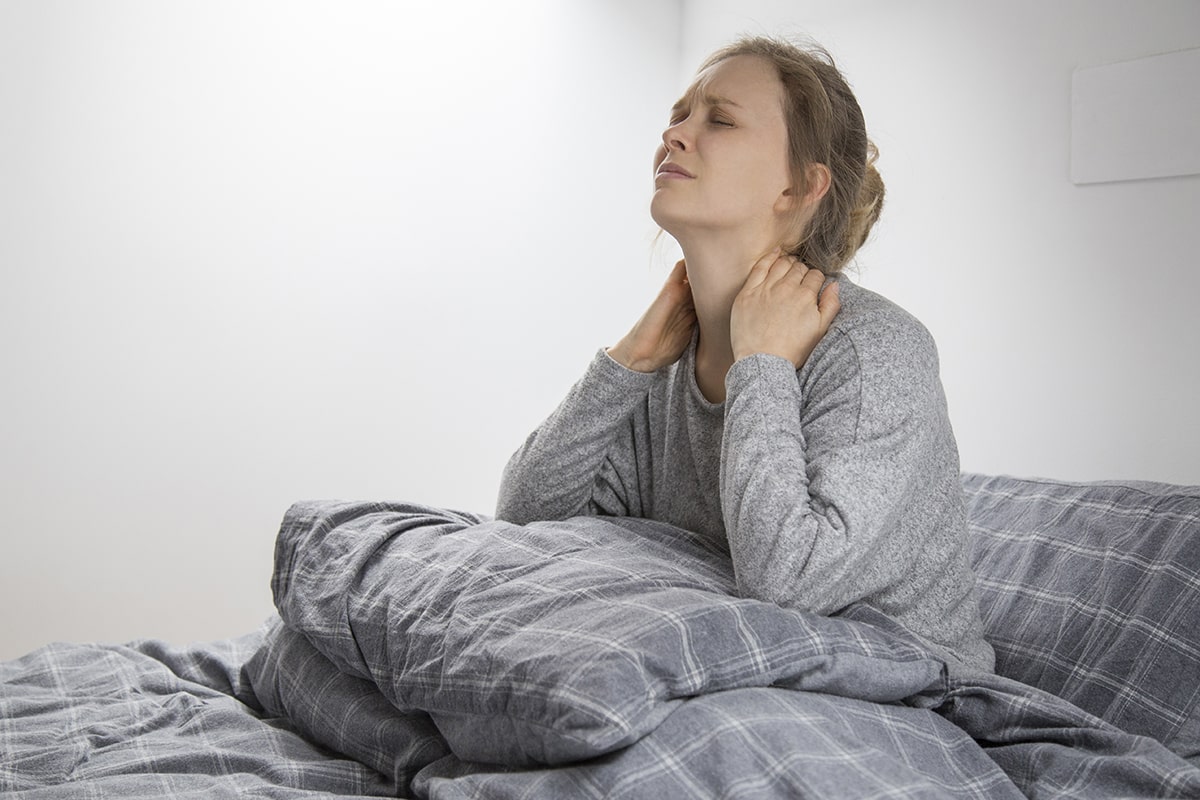
The pain that you experience in your neck region can either be a result of some kind of an injury or related to a poor posture while sleeping. Whatever the reason might be, it can cause you severe discomfort and prevent you from reaching the REM state of sleep during the night. Among several other remedies, adjusting your sleep position in a way to prevent expanding your neck muscles, has been recommended as a viable option.
Sleeping on your back or your side has been associated with alleviating the symptoms of neck pain. However, there is still a bit of prepping that needs to be done in order to ensure both the positions are actually helpful.
When sleeping on your back, make sure that the back sleeping pillow underneath your head is a thin one, which does not elevate your head in a way to ruin your spinal alignment. Moreover, your neck would be needing adequate support. For this, you can use a rounded pillow that supports the neck curvature. Alternatively, you can also use a rolled up towel or a neck pillow with a built-in neck support instead.
When sleeping on your side, you shall be needing a pillow with a decent loft underneath your head, to keep your spine straight. Don’t curl up your legs, and keep them stretched instead, while putting a thin pillow between them to help align your hips and pelvic region.
7. Best Sleeping Position for Shoulder Pain
Pain in the shoulders can develop due to various reasons, including improper sleeping position. Sleeping on your side, though considered a healthy sleeping position, can develop a lot of pressure on your shoulders, causing the muscles to build tension and get injured.
In order to get rid of your shoulder pain, try sleeping in a supine position, whereby you lie horizontally on your back with your arms at your side. This position distributes your entire body’s weight evenly, preventing excessive pressure to be built up in the joints area of the shoulders as well as the rest of the body.
While in supine position, make sure that you have a thin pillow underneath your head, your head is facing upwards and not tilted to any one side, your arms are parallel to the body and your legs are stretched straight in front of you. You can even try a slight variation of the supine position where your hands are stretched above your head or placed underneath your head. A pillow underneath the legs can further reduce pressure on your joints.
If sleeping on your back is a position that you are not comfortable with, you can sleep laterally. However, make sure you do not sleep on the side of the injured shoulder, which will only place excessive pressure on the muscles and make muscle regeneration more difficult.
8. Best Sleeping Position for Gas
Gas naturally accompanies the digestion process, yet it becomes a nuisance when it gets trapped within the body and leaves you feeling bloated or causes chest pain. In order to prevent this from happening, you need to sleep in a position that enables food and waste to move through your system enabling unhindered bowel movements.
Sleeping on your left side has been linked with enhancing the movement of food and waste through your digestive tract, thus preventing the buildup of gas within the body. Lateral sleeping position collects help from the gravitational force to allow food to move from your small intestine to the large intestine. Waste therefore travels freely and does not build up to cause accumulation of gas.
Sleeping on the left side can get uncomfortable especially if you are not a habitual left side sleeper. You can accommodate yourself by using a pillow between your knees to help your spine stay aligned and removing tension from your pressure points. Try bringing your knees to your chest area, which further improves bowel movement. You can also hug a cozy body pillow to stay in the right position throughout the night.
Alternatively, the supine position tends to be pretty helpful in alleviating symptoms of bloating as well. However you might find yourself propping your head by several inches in order to prevent symptoms of acid reflux from ruining your good night’s sleep.
9. Best Sleeping Position for Couples
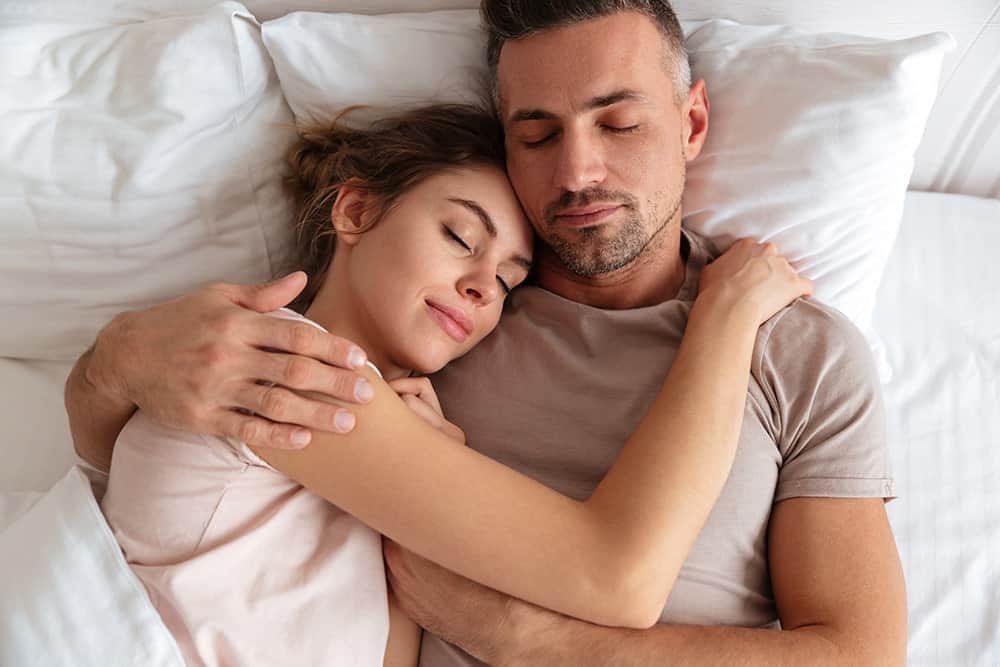
When you and your partner struggle to sleep during the night, chances are that your sleeping position is the culprit which is preventing the two of you from sleeping soundly. There is however no single sleeping position that works for all couples. The way the two of you sleep depends a lot on the kind of relationship you have.
Spooning is considered as one of the ideal sleeping positions for couples, especially if either one of them has a back pain. It is characterized by the partners both lying on the same side with one of them curled up against the other.
The back to back sleeping position has the couple facing opposite directions, usually with their feet or hands touching to show intimacy. This position tends to be highly appropriate for those who intend to sleep cold.
The nook, or more often known as the Hollywood sleeping style, is one of the most intimate sleeping positions. It involves one individual lying on their back while their partner lies on their side with their head resting on the area of their partner’s chest which is commonly known as the nook.
10. Best Sleeping Position for Heart
According to a sleep specialist, W. Christopher Winter, the ideal sleeping position for the heart might be sleeping laterally on your left side. He explains that when your heart pumps blood, it collects and enters at the right side after having circulated the entire body.
So when you sleep on your right side, your body weight presses against the blood vessels that are bringing back the blood. This slows down the return of blood to your heart and decreases the efficiency of the heart to pump blood to your body.
Sleeping on your left side however leaves the right side of your body uncompressed to collect and transfer blood back to the heart, allowing for adequate blood circulation.
11. Best Sleeping Position for Snoring
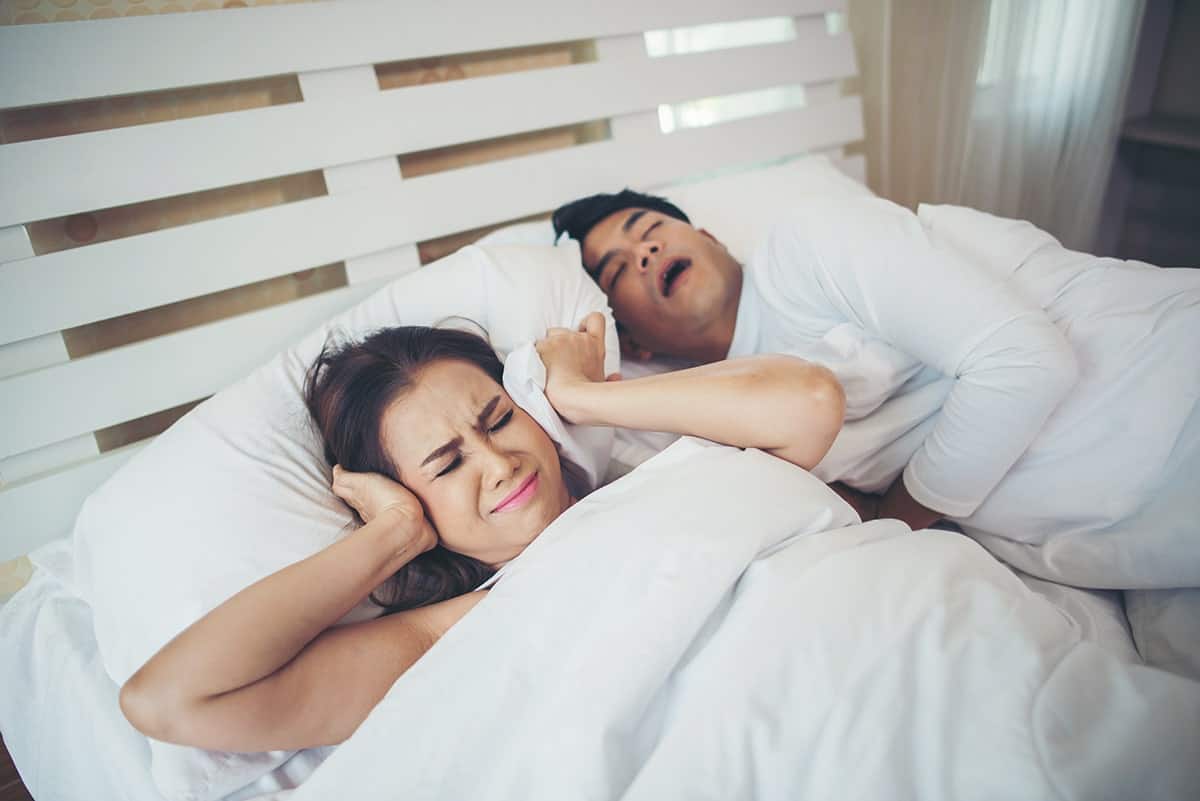
Snoring is the result of the vibration at the upper airway caused by the turbulent airflow while you sleep. Nasal congestions and the narrowing at the base of the tongue can worsen the condition. Whether you yourself are a snorer or sleep with a snoring partner, make sure to maintain adequate airflow during the night.
Sleeping on your back is considered the ideal sleeping position for all except those who suffer from sleep apnea or are predisposed to snoring. Gravity tends to take a toll on your neck and chest muscles which press down to constrict the airways, blocking off your adequate ventilation.
The best position to sleep in for snoring is therefore lateral position. Sleeping on your side prevents your airways from collapsing, and thus effectively prevents you from snoring while you sleep. If you are not a natural side sleeper and need to first adjust to the position, you can utilize specially designed pillows that help you to retain the side position while you sleep.
12. Best Sleeping Position for Sinus Drainage
The annoying symptoms of sinus can become worse during the night time when you lie down. Breathing becomes strained and the throat starts hurting while your runny nose presents a rather stressful scenario. It affects the quality of your sleep and ends up making you feel less energetic and devoid of rest.
The symptoms of sinus are triggered when gravity causes the mucus to drip down into the back of the throat instead of being drained into the esophagus. A sleeping position that prevents gravity from taking its toll on your sinus needs to be adopted to get rid of the sinus drainage.
Both the back and side lying positions can be effective in dealing with your sinus drainage, provided you prop up your position in a way to prevent the mucus from pooling in your sinus and causing pressure to build up. What you need to do is keep your head elevated by using a bunch of pillows stacked or even better, a wedge pillow.
As a rule of thumb, the higher your head is, the easier it will be for gravity to clear your sinuses and prevent the annoying symptoms from recurring. The elevation that works for one person might not work for another, so it shall take some trial and error for you to determine the ideal loft that you will be requiring to help your sinus drainage.
13. Best Sleeping Position for Pregnant Women

During pregnancy, adopting a healthy sleeping position becomes even more important for the safety of both mother and child. While sleeping on your stomach is generally not amongst the best of the sleeping positions, there is generally no problem in sleeping that way until your baby bump prevents you from laying on your stomach.
Sleeping on one’s back during pregnancy needs to be avoided at all costs. This is because when you sleep on your back, the entire weight of your stomach and that of the growing baby rests on your back, your blood vessels and your intestines. So there is a good chance you will wake up with a terrible back pain, indigestion or hypotension.
The ideal sleeping position during pregnancy is undoubtedly the lateral sleeping position, preferably on your left side. This position spares your blood vessels from the pressure exerted by your weight and ensures steady supply of blood and nutrients to your heart as well as to the growing fetus. Moreover, by making your digestive system more efficient, by enabling gravity to enhance bowel movements, your kidney function is made more efficient. This limits the swelling on your feet and ankles.
When sleeping on your side, try to prop yourself up by using a bunch of pillows or a single specially designed pregnancy pillow. You can try placing a pillow between crossed legs and see if that helps. Moreover, a pillow underneath your belly can help prevent back pains.
14. Best Sleeping Position for Upper Back Pain
Upper back pain forms when you develop a strain in the upper back muscles of the body. One common cause is an incorrect spinal alignment that strays from its neutral position and forms additional pressure on the muscles.
The worst position to sleep in with pain in your upper back is undoubtedly sleeping on your stomach. This position is in fact itself a major contributor to the development of pain in the upper back muscles. When you lie down on your front, your spine is thrown completely out of alignment, flattening its natural curvature. Since this position forces you to twist your neck in order to breathe properly, the additional strain ultimately leads to painfully sore muscles.
This leaves us with the side and back sleeping positions. Generally, side sleeping works fine and can help put out the pain. However, this can only happen when you lie down on the side which does not hurt. Similarly, while sleeping on your side, you shall be needing adequate support underneath your neck and head, between your knees as well as underneath your waist to ensure proper spinal alignment.
On the other hand, sleeping on your back is probably the best sleeping position to help with upper back pain if you are not pregnant, don’t suffer from sleep apnea or do not have any breathing issues. It is in this position that the entire weight of your body is appropriately distributed without forming pressure points. Especially if you prop up your knees by using a special pillow underneath, you will be amazed to find how light your spine feels.
15. Best Sleeping Position for Newborn
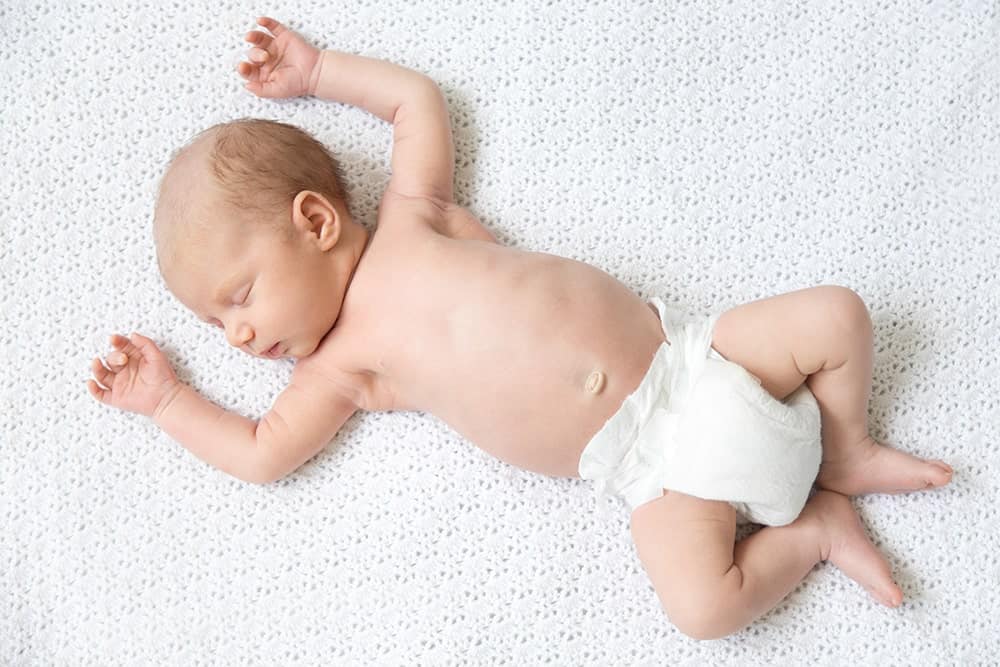
The best sleeping position for your bundle of joy is none other than the supine position. Your newborn needs to be put to sleep on their back if you are to reduce the risk of SIDS (Sudden Infant Death Syndrome) in your kid. This is because the supine position actually tends to keep the airways of your child open, preventing them from getting breathless any time of the day.
Parents often question the safety involved in letting your newborn sleep on their side. However, side sleeping has been seen to cause newborns to develop a kind of torticollis, which is a kind of sprain in the neck of your kid. It develops because your newborn’s neck and head muscles are not strong enough to support this position. It is also easier for the kids to roll over onto their stomachs while sleeping on their side, where the stomach position tends to be worse for the kid.
According to a research by NIH, sleeping on the back reduces the risk of babies choking on their vomit. This is because nature blesses them with automatic reflexes to cough or swallow any spit, in order to clear up their airways while they sleep.
16. Best Sleeping Position for Hemorrhoids
Hemorrhoids are the swollen, painful veins in the rectal area which makes it difficult for you to carry out basic activities such as sleeping soundly at night. These pains increase in intensity when pressure forms on the swollen veins. Whether you are sitting idle, passing stool or simply sleeping, you need to adapt your routine in a way to prevent excessive pressure build up in your anal area.
Sleeping on one’s back is the worst sleeping position for people with hemorrhoids. This is because this position has the tendency to put weight on your rectal area, causing your hemorrhoids to get stressed. As a result you experience the itchiness or painful contractions which makes going to sleep absolutely impossible.
Sleeping on your stomach is generally regarded as ideal for soothing hemorrhoids. When you sleep on your stomach, weight is lifted from your renal area and shifted towards your stomach instead. If you keep a pillow underneath your hips, your buttocks will get elevated which will work to further reduce the pressure on your hemorrhoids. This will also prevent you from rolling back over on your back.
However, sleeping on your stomach might not work for pregnant women, in which case the only safe option left is sleeping on the side. During pregnancy, women should try and sleep on their left side to prevent irritating their hemorrhoids, while placing a pillow underneath their knees. Doing so relieves the pressure exerted on the anal canal as well as prevents your pelvic from bearing the abdominal weight alone.
17. Best Sleeping Position for Asthma Patients
Asthma patients might find it difficult to go to sleep with the bothersome symptoms of the disease that includes shortness of breath, chest tightness, coughing with mucus and a general tiredness that accompanies it.
According to a research, the supine position has been proven with adequate laboratory research to reduce asthma symptoms and prevent the bothersome night awakening episodes among asthma patients. On the other hand, sleeping on your back itself tends to be a basic trigger for asthma attacks. This is because lying on one’s back places additional pressure on the chest and lungs of the patients making it difficult for them to breathe.
Supine position for asthma patients works when they place several pillows underneath to elevate their head and prevent their airways from collapsing with the weight. Similarly, placing a pillow underneath the bent knees further dissipates weight and allows you to relax.
Most promising research however tends to prefer the side sleeping position over back sleeping for asthma patients. This is because of the ability of this position to effectively deal with your body weight and allow your airways to stay dilated. As with the supine position, it works when your head is sufficiently elevated with a pillow or two, with your back straight as an arrow. Keeping a pillow between your knees will help in further taking off the weight.
18. Best Sleeping Position for Scoliosis
The unnatural and out of alignment spinal curve in scoliosis makes it difficult for the patients to sleep peacefully. Even though scoliosis is rarely caused by an improper sleeping position, however, the symptoms to the condition can be made bearable by adjusting your sleeping position in a way to put off weight from your spine.
The ideal sleeping position for scoliosis patients is determined by their doctors as per their individual condition. The choice is normally made between the back and side sleeping positions, which enables you to keep your spine in a neutral position. Sleeping on your stomach puts your spine off balance, especially when you have to crane your neck in a certain direction to be able to sleep. Doctors therefore recommend patients to steer away from sleeping on their stomachs.
If you experience scoliosis in your upper back, that is the thoracic curve, supine position might work best for you. However, sleeping on your side can work too as long as you sleep on the side that does not hurt, and place a pillow between your legs with another one supporting your ribcage. Individuals with scoliosis in the lumbar curve however will need to try sleeping in various positions to find the one that suits them.
19. Best Sleeping Position for Hip Pain
When hip pain bothers you during the night, making crucial adjustments to your sleeping position can help relieve it. On the other hand, laying down in the wrong position that ends up putting extra weight on your hips can aggravate your hip pain, by putting your hips out of their natural alignment.
The optimal condition to sleep with a hip pain is side sleeping or lateral position. This position tends to exert the least pressure on your hips, neck as well as the back by keeping your spine positioned in its natural alignment.
To further lay off the pressure being exerted on your body’s pressure points, curl your legs up in a fetal position and place a body pillow between your legs. Doing so supports your body’s weight and prevents disturbance of your spinal alignment that can otherwise trigger hip pain.
Even though it is advised to sleep on the side that is less sore, staying sedentary in the same position for a long while can cause your hip joints to swell and cause pain. This is precisely why doctors often recommend alternating your sides throughout the night.
Laying on your back is the second best option for hip pain. Since sleeping in this position ensures that your body weight is evenly distributed, you shall find relief from the pressure on your hip joints.
20. Best Sleeping Position for Vertigo
The symptoms of vertigo involve a feeling of dizziness and staying off balance, even if you are not moving. Going to sleep with a vertigo can become really difficult thanks to the annoying symptoms. However, by changing your sleeping position, you can prevent the possibility of experiencing a vertigo attack whenever you wake up.
It is crucial to understand that with vertigo, a single sleeping position won’t suit every individual and therefore, you need to find the position that works for you through hit and trial. However, most vertigo patients report that the episodes of a vertigo attack significantly decreased after they started sleeping in the supine position.
The supine position has been scientifically proven to prevent fluid deposits from building up or the calcium deposits from moving to where they do not belong. This prevents pressure from building up in your ear and causing a vertigo attack. Sleeping laterally on one’s side can trigger vertigo or make it worse. This is because rolling on your side, especially on the affected ear, will cause a shift in the calcium deposits and exert pressure that will eventually make your situation worse.
Elevating one’s head by several degrees to prevent pressure buildup is unanimously agreed as the most important step. Utilizing special pillows such as a wedge pillow can help you achieve the right elevation level.
21. Best Sleeping Position for Weight Loss
Firstly, losing extra fat on your body while you sleep is absolutely possible, however, key adjustments need to be made to your routine in order to reap this advantage. The better you sleep during the night, the more fat you are likely to burn. So, the best position to sleep in for weight loss is generally assumed to be whichever position you feel comfortable in.
However, the supine position with its innumerable advantages often tops the priority list of sleeping positions for weight loss. This is because when your head and torso faces upwards, the weight of your body is evenly distributed along the length of your spine. This position therefore tends to offer a sound sleep and a restful slumber is directly related to weight loss.
The second best sleeping position for weight loss is sleeping on your left side, which brings along cardiovascular benefits, thus enabling you to reach a fitful sleep yet again. You can elevate your head and knees by placing pillows with adequate loft to help better distribute the weight of your body. The key takeaway here is the fact that losing weight in a certain sleeping position tends to be subjective to the position that helps you sleep the most soundly.
